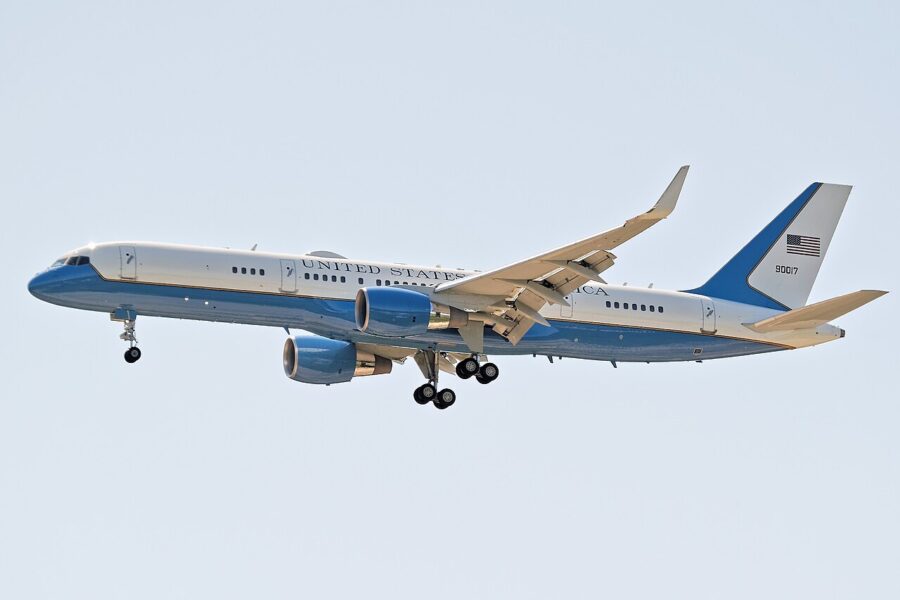U.S. Air Force C-32A Carrying Secretary Hegseth Makes Emergency Landing

A U.S. Air Force Boeing C-32A carrying Secretary of War Pete Hegseth was forced to make an emergency landing at RAF Mildenhall after a mid-air depressurization scare over the Atlantic.
On October 15, 2025, what began as a routine transatlantic flight quickly turned into a high-stakes emergency when SAM153, a U.S. Air Force Boeing C-32A, declared a general emergency just 30 minutes after departing Brussels. On board was Secretary of War Pete Hegseth, returning to Washington, D.C. following tense NATO defense minister meetings. The C-32A, a military variant of the Boeing 757, is part of the Air Force’s Special Air Mission fleet, which routinely transports senior U.S. government officials.
As the aircraft cruised near southern Ireland, the flight crew detected a developing crack in one of the forward cockpit windshields. Recognizing the potential risk of depressurization, the pilots immediately declared an emergency, squawking transponder code 7700 to alert air traffic control. They initiated a rapid descent to 10,000 feet—standard procedure for suspected cabin pressure issues—to ensure passenger and crew safety.
The crew chose RAF Mildenhall in Suffolk, England, as the diversion airport. Known for its long runways and its strategic importance to U.S. military operations in Europe, the base was well-equipped to handle the emergency. The C-32A landed safely without incident, and no injuries were reported. Secretary Hegseth later confirmed his safety on social media, posting: “All good. Thank God. Continue mission!”
The incident occurred just hours after Hegseth delivered a firm statement at the NATO summit, warning Russia that the U.S. and its allies would “impose costs” for continued aggression. Although officials emphasized that the emergency was unrelated to any security threat, the timing lent the episode additional gravity amid heightened geopolitical tensions.
The Boeing C-32A—essentially a modified VVIP Boeing 757-200—plays a critical role in the Air Force’s executive transport fleet. Powered by Pratt & Whitney PW2000 engines, it is fitted with secure communications systems and can serve as Air Force One when the President uses it for shorter or specialized missions. Its combination of range, speed, and flexibility makes it a preferred aircraft for top U.S. officials traveling abroad.
While the precise cause of the windshield crack remains under investigation, aviation experts note that such incidents, though rare, can occur due to pressure differentials, temperature fluctuations, or microscopic material fatigue. The successful emergency landing reflects both the professionalism of the flight crew and the robustness of the aircraft’s safety systems.
For Secretary Hegseth and his team, the unscheduled stop served as a reminder of the risks inherent in global diplomacy—and the reliability of those charged with keeping leaders safe in the skies. The mission will resume once the aircraft has undergone full inspection and repairs, ensuring that both diplomacy and aviation safety remain on steady ground.
Related News: https://airguide.info/category/air-travel-business/defense-military/, https://airguide.info/?s=C-32,
Sources: AirGuide Business airguide.info, bing.com,
